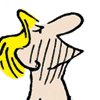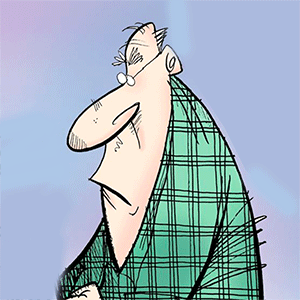My Pet World: Helping your energetic dog stay calm on walks
Dear Cathy,
I adopted a now 50-pound, one-year-old mixed breed rescue six months ago. She’s a sweet cuddler with lots of energy. She has plenty of toys, full backyard access, frequent play time with my other dog, and two 40-minute walks a day.
Overall, she’s well-behaved and growing out of puppy behaviors – except for one. I call them “puppy fits” – sudden outbursts that happen only on walks a few times a week. Sometimes, they’re triggered by another dog, but not always. At first, it was just playful jumping on me or my other dog. But lately, it’s escalated to out-of-control yanking, jumping, biting the leash and even nipping me. It wasn’t enough to break skin, but still, not OK!
She ignores commands and treats, and remains calm only long enough to eat them before she is right back at it. I’m at a loss. Help!
— Rebeca, Virginia Beach, Virginia
Dear Rebeca,
Your young rescue has so much going for her. She’s affectionate, active, and making great progress in her training. But I understand how frustrating and concerning these “puppy fits” on walks can be, especially as they escalate. Given her age and energy level, she’s likely struggling with overstimulation, frustration, and impulse control.
Since she already gets plenty of exercise, the focus should be on managing these outbursts and teaching her better coping skills. Try creating calmness before walks by engaging her in quiet activities like chewing a toy or short obedience work. If she misbehaves during a walk, change direction immediately to break the cycle.
She’ll quickly learn she needs to focus on you – not other dogs – because she never knows where you’ll turn next. Reinforce calm behavior with high-value treats (yummy treats you don’t normally give her) when she stays focused. If she nips, “yelp” to get her attention, then stop moving until she settles. If she doesn’t calm down, then walk in a new direction again. The goal is to keep her engaged and on her toes.
Since her behavior is escalating and she is ignoring commands, I also strongly recommend working with a trainer experienced in leash reactivity and impulse control or a group training class where you can practice with other dogs around. You should also work on basic commands to build better impulse control. I highly recommend Clicker Training for Dogs by Karen Pryor — it’s simple, easy to follow, and it works. Training is the best way to reshape behavior and build her focus.
Dear Cathy,
Finn, our 18-month-old lab/beagle mix, has made great progress since we rescued him several months ago. In the beginning, he had occasional accidents in the house, but he's improved a lot.
Now, the only time he pees inside is when we leave him uncrated and alone. We usually crate him when we’re out, but I would like to give him a little more freedom. If I’m only gone for an hour or so, I leave him out after making sure he’s gone outside to relieve himself. Unfortunately, he still has accidents in these situations.
I want to be able to trust him alone in the house, but I also don’t want to replace yet another area rug. What can I do to help him transition?
— Susan, Wantagh, New York
Dear Susan,
It sounds like Finn has made great progress since you brought him home – well done! However, his accidents when left uncrated suggest he may still be working through house training in certain situations or experiencing some separation-related anxiety.
Since he reliably stays dry in his crate, he may not yet feel entirely comfortable having full access to the house when you’re gone. Some dogs see their crate as a safe space, and when given more freedom, they can become anxious or unsure about where to go. Even though you let him out before leaving, stress or excitement could still trigger accidents once you are gone.
Instead of giving him full access, try confining him to a single room or gated-off area with easy-to-clean flooring. Start with short absences (10 to 15 minutes), then gradually extend the time if he stays dry. Leaving him with an enrichment toy, like a stuffed Kong or puzzle feeder, can also help redirect nervous energy and create a positive association with alone time.
If the issue persists, revisit basic house training principles: taking him outside after eating, sleeping, and playing, and reinforcing successful potty breaks with a clicker or a marker word like "Yes!" or "Bingo!" followed by a treat.
Strengthening these habits will help him understand that potty breaks only happen outside, even when you’re not home.
_____
_____
========
(Cathy M. Rosenthal is a longtime animal advocate, author, columnist and pet expert who has more than 25 years in the animal welfare field. Send your pet questions, stories and tips to cathy@petpundit.com. Please include your name, city, and state. You can follow her @cathymrosenthal.)
©2025 Tribune Content Agency, LLC.
(c) 2025 DISTRIBUTED BY TRIBUNE MEDIA SERVICES, INC.












Comments